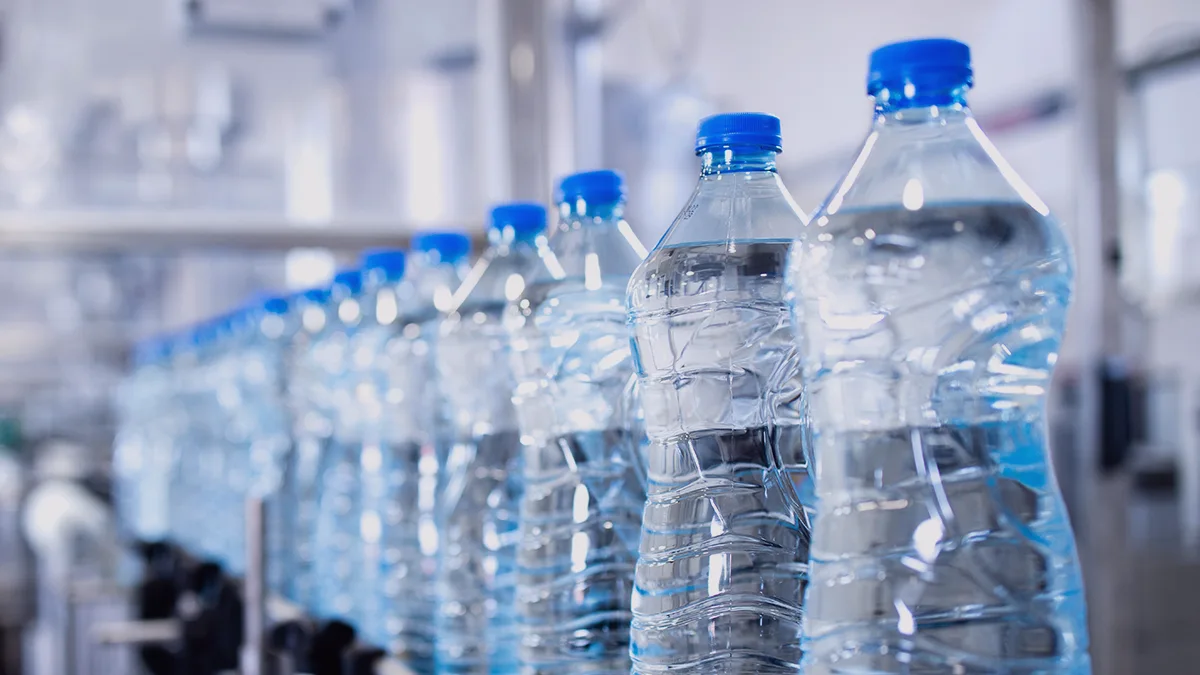Mastering packaging data with PLM: Insights from Manufacturing

In an era of increasing regulatory demands and market pressure for sustainability, packaging is no longer just a product’s protective layer. Today, it plays a critical role in compliance, logistics, aesthetics, environmental impact, and customer engagement – all while manufacturers strive to keep costs low.
For many manufacturing companies, managing packaging information (labels, components, materials, certifications) is fragmented and error-prone. Product Lifecycle Management (PLM) systems effectively address these issues. They enable a comprehensive, digital approach to packaging data throughout its entire lifecycle – just like a product – from design and testing to approval and ongoing compliance tracking.
Packaging = Data: many components, many challenges
In PLM, packaging is treated as an integral part of the product.
Whether we’re talking about:
- Primary packaging (e.g., glass bottle, PET bottle, tube, blister, can),
- Secondary or transport packaging (e.g., carton, film, pallet),
- Labeling (e.g., language, EAN code, UDI code, recycling symbols, pictograms),
Each of these components has its own structure, version, approval status, links to other elements, and documentation. What’s more, each component may vary depending on product variant and manufacturing site.
Companies relying on spreadsheets or distributed server files often face issues such as:
- Outdated label versions and inefficient data management across many label types,
- Labeling errors due to unsynchronized changes in packaging suppliers,
- Lack of documented compliance with market regulations.
PLM centralizes data and creates a so-called “single source of truth” – a reliable, shared repository of packaging information accessible across departments.
How does PLM support packaging management?
1. Product structure with a separate packaging BOM
PLM enables the creation of detailed product structures (MBOM, EBOM) that include packaging components. This means that for each product variant, a specific configuration of labels, cartons, films, and even user instructions can be defined.
Example: A cleaning products manufacturer offers the same product in 7 language variants. Each variant has a different set of labels, codes, and required markings. In PLM, the product structure reflects these differences and assigns them to the respective product variants tied to specific markets.
2. Automation of revisions and approvals
A change in one component (e.g., a recycling symbol to comply with PPWR) automatically triggers a new revision cycle. Design, quality, and marketing teams are notified, and changes are approved digitally, with full traceability and audit history. The process ensures that no versions or related data are overlooked. All impacted elements receive corresponding new revisions.
Example: A beverage company switches its transport carton to a lighter, 100% recyclable version. PLM automatically generates a list of affected products and the documentation needed for quality department approval.
3. Connecting packaging data with legal and customer requirements
PLM allows specific requirements to be assigned to each component – for example, minimum recycled plastic content, label compliance with French regulations, or specific retailer expectations. All this information is accessible from one system, without digging through emails, folders, or spreadsheets. These data points can also be analyzed during a change process, with the PLM system identifying what might be impacted by the change.
PLM and compliance with PPWR and other regulations
In 2022, the European Commission proposed the Packaging and Packaging Waste Regulation (PPWR), which is set to transform how packaging is designed and managed across the EU.
PPWR imposes requirements such as:
- Restrictions on packaging weight and volume (eco-design),
- Digital packaging passports and full traceability,
- Recycling rates and use of recycled materials,
- Mandatory data reporting by producers.
PLM systems support these goals exceptionally well by ensuring data consistency, easy updates, revision tracking, and integration with ERP, LIMS, MES, or QMS systems. They allow companies to apply the necessary metrics to packaging data, manage them to maintain compliance, remain competitive, simulate innovation outcomes, and forecast costs.
Bonus: integration with labeling systems
Many companies use separate systems for label design (e.g., NiceLabel, Bartender). Integration with PLM enables:
- Automatic feeding of label data directly from the system,
- Template unification and label versioning,
- Faster time-to-market and fewer labeling errors.
Summary: tangible business benefits
Key benefits of implementing PLM for packaging:
- Compliance with PPWR and other regulations (REACH, RoHS, CLP, GHS)
- Reduction of errors and production downtime
- Shorter time-to-market for changes
- Improved collaboration across R&D, procurement, quality, and marketing
- Full traceability of decisions, revisions, and documentation
PLM is no longer just an engineering tool. Today, it’s a critical enabler of compliance, sustainability, and competitive advantage.
Would you like to know more? Read: What is the PPWR Directive and how will it affect manufacturers?
